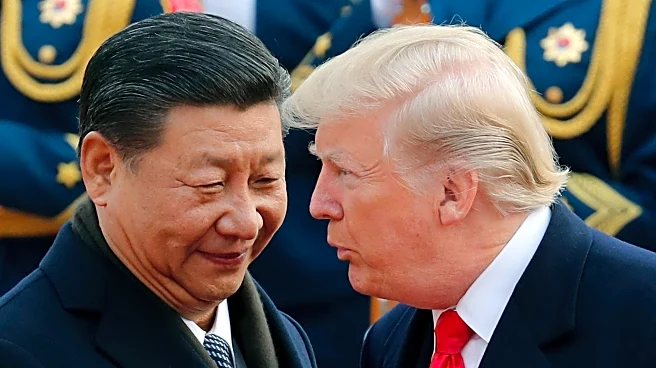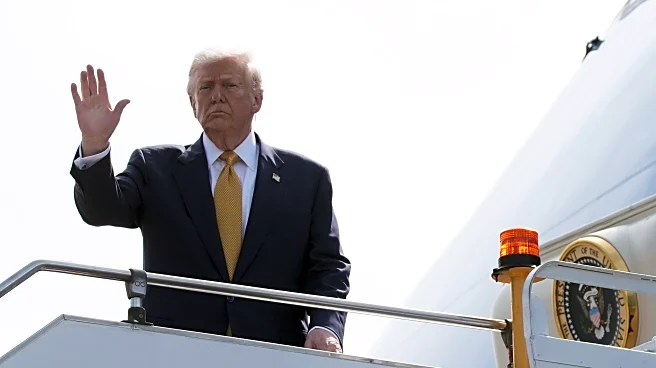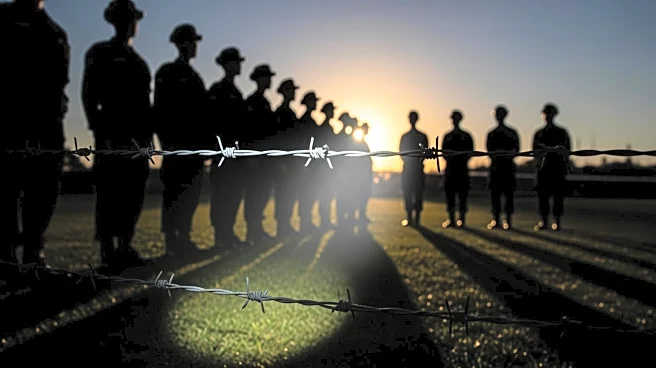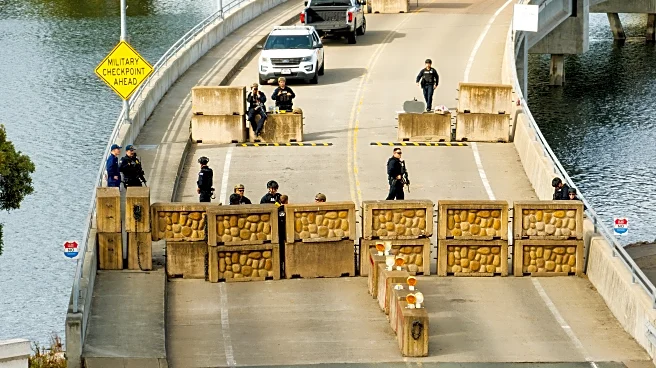What's Happening?
Federal government lawyers have acknowledged errors in sworn declarations presented to the 9th U.S. Circuit Court of Appeals regarding the deployment of federal officers to Portland's U.S. Immigration and Customs Enforcement (ICE) building. The initial
claim stated that 115 Federal Protective Service officers were reassigned to Portland, but it was clarified that this number referred to deployments, not individual officers. In reality, 86 officers were sent from other regions. Additionally, the government admitted to overstating the percentage of the agency's inspectors reassigned to Portland, correcting it from nearly a quarter to about 13%. These errors were highlighted by attorneys for the state of Oregon, who have requested the 9th Circuit to reconsider its ruling that sided with the Trump administration. The ruling had allowed for the deployment of Oregon National Guard troops to Portland, which is now on hold pending further review.
Why It's Important?
The admission of errors by federal lawyers is significant as it impacts the legal proceedings surrounding the deployment of federal officers and National Guard troops to Portland. The inaccuracies in the data provided to the court could influence the outcome of the case, which challenges the federal government's authority to deploy military forces in response to civil unrest. This situation underscores the importance of accurate information in legal contexts, as it affects the credibility of government actions and decisions. The case has broader implications for federal-state relations and the balance of power in addressing public protests and maintaining order.
What's Next?
The 9th Circuit's ruling is currently on hold as the court's 29 active judges decide whether to reconsider the panel's decision. A three-day trial is scheduled to begin before U.S. District Judge Karin J. Immergut, focusing on the merits of the lawsuit filed by the state of Oregon, the city of Portland, and the state of California. This trial will further explore the legality and justification of federal deployments to Oregon. The outcome could set a precedent for future federal interventions in state matters, particularly in situations involving civil unrest.
Beyond the Headlines
The case highlights the tension between federal authority and state sovereignty, especially in the context of civil protests. It raises questions about the appropriate use of federal resources and the potential militarization of responses to public demonstrations. The legal proceedings may also influence public perception of government transparency and accountability, as well as the role of the judiciary in checking executive power.















